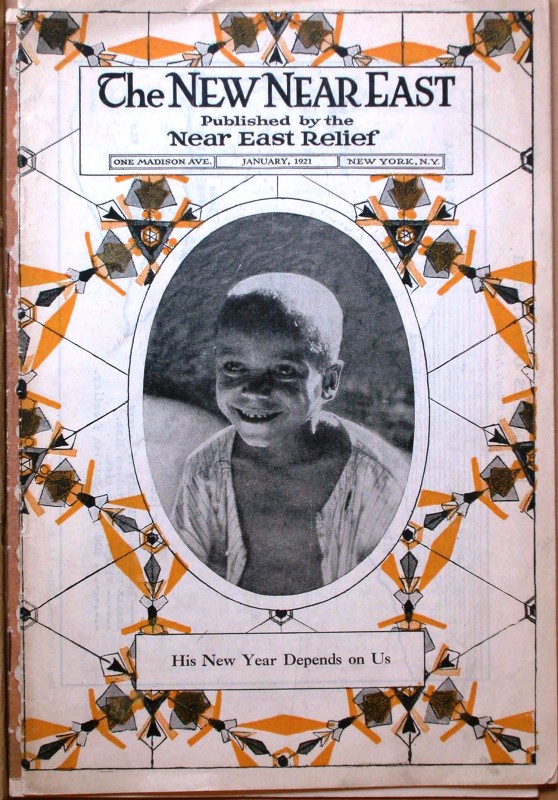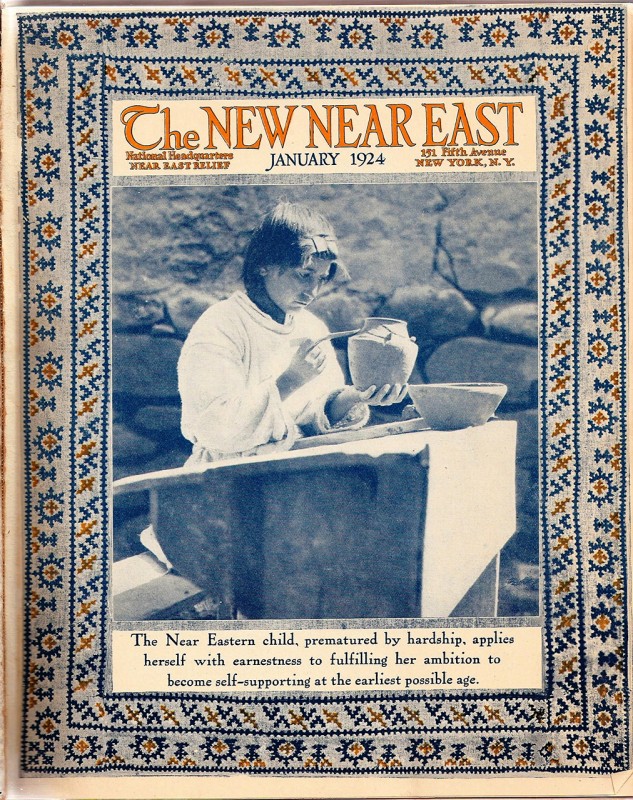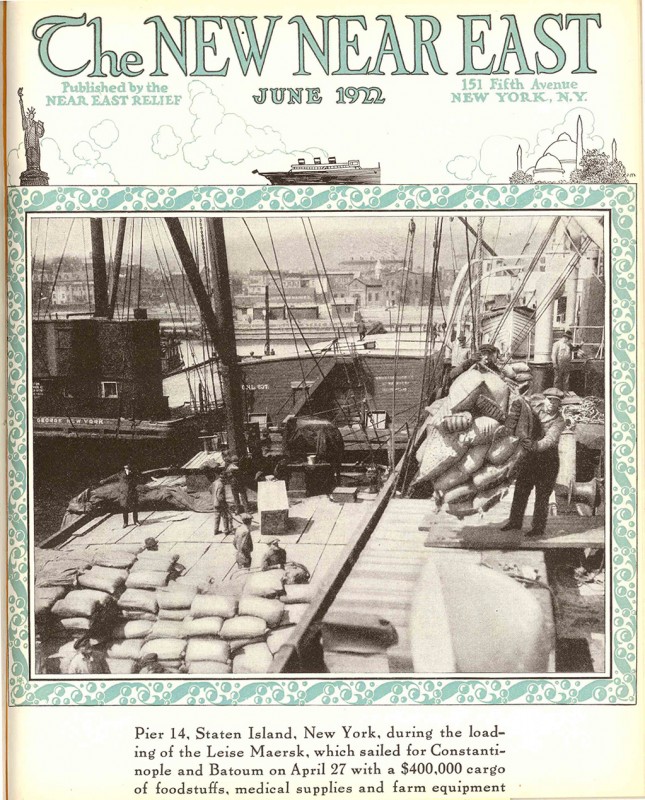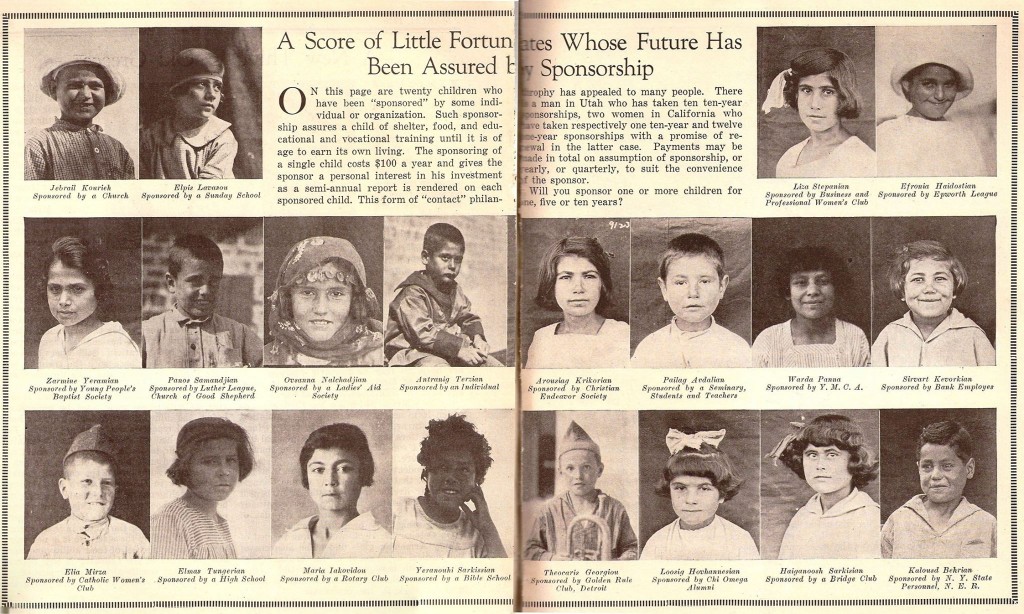Spreading the Word: The New Near East Magazine
Near East Relief began publishing the New Near East magazine as a way to keep the public engaged. Nearly 100 years later, the issues offer incredible insight into Near East Relief’s work.

From Near East Relief’s earliest days, the organization recognized the power of communication. Men like Charles Vernon Vickrey specialized in bringing Near East Relief’s message into the American home. The New York City office produced a wide variety of promotional materials, ranging from large eye-catching posters to smaller, more personal appeals for aid. The staff also gathered material from the field to share with the public. The early Committee sent regular bulletins to more than 300 religious publications, in addition to contacts in the lay press.
Over time, these bulletins evolved into a magazine. The early issues of the New Near East present somewhat dry material for the modern reader. For example, the January 1920 issue (the cover of which is pictured at left) contains a methodical account of monthly expenses at the Konia orphanage and relief station, a chart showing the drastic increase in orphans and refugees between November 1919 and January 1920, and a fervent appeal for the donation of cows to help restore the Near East’s livestock supply.
These early, statistic-heavy issues are extremely helpful in painting a picture of the factual aspects of Near East Relief’s work — especially since there are almost no remaining records from the orphanages in Turkey. Using these magazines, we can piece together how many orphans there were at a given time, where they were living, even what they were eating and wearing. And of course, every issue contained photographs from the field. Images of orphans or of refugee women with babies were used to illustrate the plight of the survivor. The early issues often featured “before and after” images: the first photograph showed an emaciated child in rags arriving at the orphanage; the second showed a healthy, smiling child in a clean orphanage uniform.

A Region in Flux
The New Near East also advertised one of Near East Relief’s most unique services: the individual remittance program. At a time when transferring money between countries was both difficult and risky, Near East Relief offered Armenians, Anatolian Greeks, and Syrians living in America a way to send money to family members in war-torn Asia Minor. Donors sent checks to the New York office. The money was sent to Near East Relief offices in major cities like Constantinople and Beirut, where it was sent on to the recipient or held for safekeeping. In this way, dozens of families living in America were able to finance their relatives’ emigration.
Near East Relief also strove to keep its readers informed of political and military developments through the New Near East. At a time when communication relied on telegrams and letters, the New Near East editorial board made an effort to reproduce messages from the field for the general public. The issues included dramatic accounts of relief workers committing heroic acts in the face of the advancing Kemalist army, and maps of the ever-changing borders in Asia Minor. The October 1922 issue included a special insert on the burning of Smyrna, which was still a developing story — at the time of publication, hundreds of thousands of people had been driven from their homes and were still seeking refuge on the shores of the Aegean Sea.
By 1922 the magazine had adopted a more standard structure. The cover featured a photograph of Near East Relief activities. Orphans were an extremely popular subject; their bright faces represented the culmination of all of Near East Relief’s work. Most covers also included a colorful border that cleverly referenced Near East Relief’s work. Education and industrial development were common cover themes. Many covers included borders of embroidered textiles like the one at right.

Celebrating Accomplishments
Some covers celebrated Near East Relief’s accomplishments on the home front. The June 1922 issue shows the supply ship Liese Maersk being loaded with lifesaving food and supplies in Staten Island, NY. This cover includes a particularly charming border of bubbles, and a ship sailing between the Statue of Liberty and an Ottoman-style building. Interestingly, the covers were usually not connected to an article within the body of the magazine.
Each issue contained a two-page center feature on a specific theme. More often than not, these spreads took the form of photo essays describing a single location or special project. The New Near East included many pictures of orphans, but they were almost never identified by name. On very rare occasion the center spread included pictures of named individuals, such as the spread below.
Similarly, the magazine contains many accounts written by relief workers and visitors, but very little written by orphans and refugees. A few issues include reproductions of drawings or poems from the orphanages.
The New Near East went from a monthly publication to a quarterly in 1926. This corresponded with the beginning of Near East Relief’s shift from emergency relief to development, which would culminate in transition to the Near East Foundation in 1930.

Center spread from March 1926 issue featuring photos and names of orphans sponsored by Near East Relief benefactors. Image courtesy of Vicken Babkenian.
Learning From The New Near East
The New Near East was sent to a wide variety of subscribers: individuals, institutional donors, religious congregations, universities, libraries. It was even possible to purchase a gift subscription for a friend. Although the New Near East magazine appears to have been extremely popular in the 1920s, it is difficult to find a complete collection of issues. Our own archives are incomplete. Some public archives do have copies of the New Near East, and the magazine remains popular with private collectors.
We hope to eventually digitize the full run of New Near East as searchable, flippable ebooks that mimic the experience of interacting with the original magazine. This collection will be especially useful to family historians who are researching relief workers. Many issues highlight the work of the heroic individuals that helped Near East Relief to save one million lives.

The front and back covers of the June 1926 issue. Image courtesy of Vicken Babkenian.
